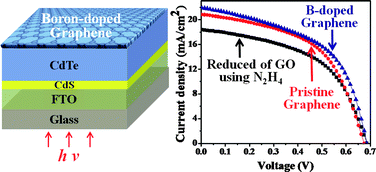How Boron Enhances the Value of Advanced Materials?
Boron is an ingredient in advanced materials with a wide range of applications. It is mainly useful as a dopant and part of semiconductors, fiber optics, and other electronics. Boron-containing compounds are also useful for making borosilicate glass and fertilizers for plants like orchids and tomatoes. You can find them in cosmetics such as nail polish removers and hair relaxer solutions.

Advanced Materials
The Role of Boron in Advanced Materials
Boron-doped crystals of SiO2 exhibit high dielectric constant values. It is due to the formation of deep traps at the crystal surface. This may contribute to its use in high-frequency technology.
Boron-doped GaN exhibits low dielectric constant values. And it is due to the formation of shallow traps, which may contribute to its use in optoelectronics. It is also useful as a dopant for high-temperature superconductors and ferroelectric. Here, it stabilizes these materials against phase transitions at higher temperatures.
Boron is important in other fields, such as oil & gas extraction or advanced electronic materials.
It is an element found only rarely within Earth’s crust. It has a unique ability to act as an ingredient in advanced materials extensively used today. The result of including boron in advanced materials varies. It depends on whether the material needs to be strong or weak. It makes things stronger by acting as an alloying agent with other metals like steel. So they are less brittle during exposure to cold conditions. Under normal circumstances, it helps to make other metals tougher and less prone to cracking.
Boron, as an ingredient in advanced materials, has a variety of applications. It includes high-strength armor for tanks and glass that is stronger than stainless steel or any other substance. It helps in radiation shielding (in the form of borosilicate) and insulation for electrical wires that are both heat-resistant and fireproof.
These types of properties are difficult to find elsewhere. Especially without incorporating it into the material’s construction process.
Boron in Semiconductors
It is critical in semiconductors. Because it acts as a dopant and helps control the electrical properties. It can cause an insulator to become more electrically conductive. It helps certain materials such as gallium arsenide, boron can allow electrons to behave like massless particles.
Boron acts as an additive and improves the dielectric strength of polymers. They are a part of capacitors, insulation layers on wires, and sealing gaskets, among others.
Boron in Advanced Technology
- LEDs
- Solar Cells
- Photovoltaic Devices
- Fiber optics
In LEDs, there is evidence that adding some form of doping agent will increase efficiency. It happens by reducing the recombination rates. Currently, this injects dopant into silicone polymer substrates. But research suggests that boron doping improves efficiency and allows smaller, more efficient LEDs.
In solar cells, a dopant in silicon produces a p-type semiconductor. This enables it to transfer electrons from one layer of atoms to another. Boron is effective at increasing the number of electrons that can be extracted. And therefore, it boosts function output by up to 30%.

Boron Doped Graphene
Source: Royal Society of Chemistry
It increases electrical conductivity in photovoltaic devices. This is prevalent in PV chips and concentrator systems (CSP) with concentrating lenses or mirrors on top layers. Here photons are converted into electricity. This improves charge collection, so they use fewer materials like aluminum while achieving higher outputs.
Boron-doped fiber amplifiers allow for better signal transmission in fiber-optic communication networks.
The main use of boron is to strengthen the material it is a part of and help to bind different materials together. It also improves their efficiency.
Boron as an Additive to Strengthen Steel and Aluminum Alloys
Steel is the most useful construction material. It is strong, durable, and versatile. However, it has some limitations. For instance, steel is susceptible to corrosion from water or air exposure. Steel also has a low ductility which makes it brittle at cold temperatures. It is so fragile that if you drop it on the floor at home, there’s a good chance that your foot will break through the thin sheet of metal.
What is the solution? A simple but effective one. It is added to make steel more resistant to corrosion and increase its ductility by making it less brittle. Studies show adding boron as little as 0.003% significantly improves the strength of steel. It works against stress rupture in both high-strength and in low-strength conditions.
What are the results? Steel becomes more resistant to corrosion and less brittle. It helps in various applications, including construction materials like rebar.
Boron Can Replace Titanium for Aircraft Parts
Boron is as effective as titanium at replacing aluminum in some military aircraft parts. Now there are even talks about using it instead of metal alloys altogether. Hence, it can replace many advanced materials, too.
Do you want to reduce your car’s weight with better fuel efficiency? And also protect it from crash impacts by an ultra-durable material? Sounds too good to be true, but this can happen soon, thanks to Boron.
One application where Boron plays a key role in military aviation. Aircraft need structural materials that are both lightweight and strong enough. They need to cope with high pressures and temperatures inside their hull without breaking. This often means they must use expensive metals like titanium. Recent research shows that using boron instead provides an equally effective alternative. It also significantly reduces costs by up to 30%. This means that not only is the aircraft more fuel-efficient. But also they can become lighter and stronger.
Boron in High-Temperature Resistant Materials
Another important application of Boron in advanced materials is that it can withstand high temperatures. It can protect other components from melting down inside power plants or furnaces. To do so, these metals need to cope with the heat. This often means using expensive alloys of nickel and cobalt like NiCoAlFe (NICO).
These metals are, however, becoming rarer. Because extracting them costs money while polluting the environment at the same time. Luckily there are alternatives available such as boron alloys. These alloys containing lesser Boron also have a particular role in producing high-temperature-resistant materials. It is a key ingredient in producing heat-resistant alloys. They are up to three times stronger than steel at temperatures around 1200 degrees Celsius. They are also lighter, making them perfect for aerospace or automotive applications. Here weight needs to be down. Hence, it plays an important role in these advanced high-temperature-resistant materials.
Boron in Nuclear Reactors
It also plays a role in nuclear power. Because its low-strength properties make it especially suitable for reactor components that experience high temperatures and pressures. It also helps to slow down neutrons in the nuclear reactor, enabling them to split atoms and release energy.
Takeaway
Boron is a chemical element with many applications in advanced materials. It is present as an ingredient in products like plastics, polymers, and ceramics. You can even find it in some alloys, making it one of the most versatile substances on earth.





